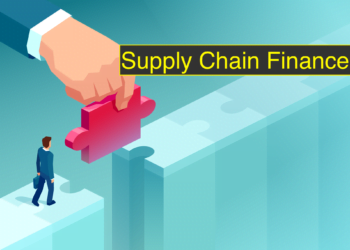With 2022 officially wrapped up, it’s time to do a teardown of the Digital Banking Business Model for the top B2C Fintechs at this time.
2022 was not kind to Fintechs. The following YTD (Year-to-Date) performances were logged for each major Fintech company with a presence in Digital Banking. For context, the Nasdaq index traded down 33.7% in 2022.
Publicly Traded Fintechs
- Paypal (+Venmo) – Ticker: PYPL – Down 63.5% – $81.1B Market Cap
- Block [Square] – Ticker: SQ – Down 61.7% – $37.6B Market Cap
- Nubank – Ticker: NU – Down 59.2% – $18.9B Market Cap
- (Transfer)Wise – Ticker: WISE (London) – Down 24.5% – $5.7B Market Cap
- SoFi – Ticker: SoFi – Down 70.6% – $4.3B Market Cap
- Marqeta– Ticker: MQ – Down 66.1% – $3.3B Market Cap
- Affirm – Ticker: AFRM – Down 89.8% – $2.8B Market Cap
- MoneyLion – Ticker: ML – Down 84.3% – $0.2B Market Cap
- Dave.com – Ticker: DAVE – Down 96.5% – $0.1B Market Cap
Privately Traded Fintechs
- Stripe – Peak Valuation $90B (Q2 ’21) – Most Recent Valuation $74B (Q2 ’22) – Down 28%
- Klarna – Peak Valuation $45B (Q2 ’21) – Most Recent Valuation $6.7B (Q2 ’22) – Down 85%
- Revolut – Peak Valuation $33B (Q2 ’21) – No Fundraising in 2022 – Unknown
- Chime – Peak Valuation $25B (Q3 ’21) – No Fundraising in 2022 – Unknown
- N26 – Peak Valuation $9B (Q3 ’21) – No Fundraising in 2022 – Unknown
- Monzo – Peak Valuation $4.5B (Q4 ’21) – No Fundraising in 2022 – Unknown
- Varo – Peak Valuation $2.5B (Q3 ’21) – No Fundraising in 2022 – Unknown
Risers
- Afterpay – Afterpay sold to Square (Block) for $29 Billion in Q3 ’21 at near the peak of their valuation. Looking at Affirm (-89.8%) and Klarna (-85%) it is fair to say that their BNPL Business Model would have blown a pretty big hole in their valuation had they held on
- Nubank – Nubank received a vote of confidence when Warren Buffet doubled-down with a total of $1 Billion invested in 2021, topping up on the $0.5 Billion invested in Q1 ’21. They hit 70M+ users across Latin America, and their stock being down ~60% – while not good – keeps them at the top of the Challenger Banks in terms of market cap
- Revolut – Revolut and Klarna are two completely different companies (payments-centric retail bank vs. BNPL) but they both have young, brazen CEOs. Klarna took the big ‘down round’ in 2022, Revolut did not. The company continues to innovate, and while not at the top of the pack, they are still arguably in the Top 3 Digital Banks in the global game
- Wise – Wise (Transferwise) always flies under the radar as a London-based, publicly-traded Challenger Bank but they have a great business model (relatively speaking) and outperformed every other publicly-traded Fintech + the Nasdaq index on the back of a couple of really good quarters in 2022
Fallers
- Klarna and Affirm – Klarna and Affirm both oversaw an aggressive growth strategy in 2020/2021, when the ‘pandemic years’ pushed BNPL into the spotlight. They expanded beyond the core BNPL product (‘Pay in 4’) into Financing where they ended in either a lending/credit-card type Customer Relationship. Delinquencies in these products (‘ex- Pay in 4’) began to increase in late 2021, and skyrocketed into 2022, thereby forcing both companies to take huge write-downs on Credit Losses
- Niche Fintech Banks – some of the niche Fintech Digital Banks mentioned above – Dave, Money Lion, Varo, etc. – saw their stocks collapse and are on life-support heading into 2023. These types of happenings are expected based on the Rule of 3s in markets (generally) where only the top players gain enough market share to be profitable. In the U.S., these companies rode the wave several years back, but offered nothing innovative enough to separate themselves from the pack
- Chime – Chime looked poised a year ago to launch an IPO and have a 2022 like Nubank had. But Chime’s business model is more oriented around payments, whereas Nubank’s is oriented around lending (ie. banking). Chime is still one of the top Digital Banks in the U.S., but there will be many questions going into 2023 and beyond about the sustainability of their business model without some major moves (they did try to acquire DailyPay for ~$2B in cash + stock in Q2 ’22).
Who Are Using Fintechs As Their Primary Financial Institutions?
Despite the hype in 2020/2021 and some early positive signals in the market, less than 1/5 of American consumers use a Fintech Digital Bank as their primary financial institution.
The FinTechs have gained limited traction. Only 17% of consumers use FinTechs as their primary financial institutions (FIs). Drill down a bit, and it turns out those digital upstarts are popular among low-income consumers who live paycheck to paycheck with issues paying bills. As many as 39% of these consumers use FinTechs and 22% use them as their primary FI.
As we mentioned in our post on Fintech Customer Acquisition Costs (CAC):

Fintechs get by by offering a smoother, more digital-friendly version of a banking experience compared to incumbent Big Banks. But they also make a fraction of the prospective revenue per customer (Average Revenue Per User – ARPU).
A Fintech will be happy if they can acquire users on the cheap and then earn a margin greater than the CAC. That difference between the APRU and CAC can represent the margin on a short-term basis, but on a long-term basis it manifests as LTV (Lifetime Value).
Revolut, for example, spends on Customer Acquisition within a target range of 18 months to break-even on the acquisition.
Retail Banks that spend $300 – $600+ on Customer Acquisition can net that back in the mid-term through a multi-faceted banking model:
- usage fees
- consumer lending products (credit card, lines of credit, etc.)
- mortgages
- business banking
Thus Retail Banks can earn hundreds, if not thousands, of dollars per year on a customer. They are able to offer a full-suite of products/services that most Fintechs still cannot. Some – like Revolut – are trying to become a ‘Super App‘ to compete with the Big Banks. Others – like Square – have separate pieces that can gel together into a comprehensive suite of products to take on the Banks.
But as of today, the offerings are just too thin from most Digital Banks to compete with Retail Banks for the majority to take them on as their Primary Financial Institution.
Payments Business Model vs. Banking Business Model
Then there is the business model side. At this juncture in market history, an interchange-based payments model does not appear sustainable as a standalone model for Digital Banks.
Numerous fintech startups have based their business model entirely on interchange. Credit cards earn higher interchange than debit cards but are substantially more complex of a product to deliver and manage. Challenger debit card products (aka neobanks) such as Chime innovated with free offerings and interchange-driven revenue models. In practice, interchange only is a business model that doesn’t appear sustainable. It may work at a very large scale. Still, between acquisition costs, fraud, and operating costs, most fintech companies have found that they need other products (such as lending) or other models (such as membership fees or merchant-funded rewards).
The margins are too thin until companies get to a large scale and start to be able to muscle in on the ‘Issuing Bank’ margin.
And even a company like Square (via payment processing or Cash App) will earn only a fraction of the top-line % in Net Revenue in the end.
Naturally, credit cards have much higher transaction rates (2 – 3%) relative to debit cards, but if we look at Square’s relationship with its banking partners based on the Marqeta S-1, we can see how this works. Even among Fintechs the Interchange Take Rate is relatively low.

While Credit Cards have higher Transaction Take Rates, many Digital Fintech Banks will offer those back as Cash Rewards in order to entice more users.
Generally in the fintech world banks expect ~1.5 – 2.5% (i.e. 150-250 bps) in interchange, so hypothetically they would collect ~250 bps (2.5%) per transaction, give 200 bps back to the bank, and keep 50 bps as revenue. Most banking platforms (like Chime, etc.) will often have negative margins because they’re keeping 50 bps for revenue but then giving back ~150 bps to the customer as rewards or cash-back. Over time as they scale they expect that 200 bps they share with the bank to go down and for their margins to improve.
Thus lending is a necessary part of the mix in Digital Banking. Revolut – who is planning to launch mortgages in the future – shows a good example of this mix.

We can see how having expertise and a significant % of revenue from Interchange Fees is good, but there needs to be other levers to bolster the bottom-line. Revolut has a subscription fee, which is more in-line with European standards – most American Digital Banks are free.
M&A for Big Banks Got A Lot Cheaper
While some will rise, others will fall. The Big Banks have been much maligned in recent years for their lack of innovation, predatory practices around lending, and lack of transparency around fees. According to many headlines, they were supposed to be dead by now.
And yet 2022 has turned the tables. Big Banks are beneficiaries of rising interest rates to a certain extent, as they hold huge deposit bases and earn NIM (Net Interest Margins) on the spread between what they lend money out at and what they pay depositors.
With huge balance sheets, Fintechs tanking, and 2023 not exactly looking like 2021 in public markets, Big Banks can step in and acquire rival Digital Banks. That is if they want them.
There are many threads being woven around the Future of Banking right now.

It is no longer just the Fintechs who they are competing with. Digital currencies are now in the mix and the specter of CBDCs (Central Bank Digital Currencies) looms in 2023. Credit Unions have made a dent in many of the Big Banks market share in different regions due to their more local touch and relationship-based banking model.

The point is, no Big Bank will go out and make a splashy acquisition just for the sake of it. The main reason they would likely do it is to acquire some kind of technological platform that they can scale into their own market. That, or they plan to launch a sub-brand to target the younger generation and want something cool to do so.
While neither Incumbent Retail Banks or upstart Fintech Digital Banks are in their tip-top shape, historically, opportunity still looms large. Empires will rise and fall in the world of banking in the years ahead, and even small players who appear down and out may have learned exactly the right lessons to take it to the bank in 2023 and beyond.
Top 3 – Learn More
Business Model Canvas – Banking
Nguồn : Source link


























